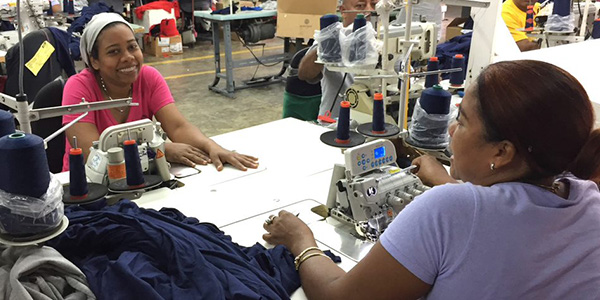Unprecedented Garment Factory Models a Genuine Living Wage
Alta Gracia: Living Wage Factory in the Dominican Republic

The Alta Gracia factory, located in Villa Altagracia, Dominican Republic, was founded in 2010 as a model garment factory that produced apparel sewn by workers who were paid a living wage, represented by a democratic union, and worked in conditions free of the abusive conditions so common in garment factories around the world.
The factory was in operation from 2010 until 2021 until constraints imposed by the Covid-19 pandemic forced the parent company to close their business.
From its inception to the date of the factory’s closure, the Worker Rights Consortium (WRC) served as monitor of the factory’s superior labor standards by conducting ongoing verification of working conditions. WRC monitoring included off-site interviews with factory employees, monthly review of factory payroll, verification of the factory’s health and safety standards, and regular communication with factory management to ensure compliance not only with Dominican law, but with the superior labor standards to which the factory committed.
While it was in operation, Alta Gracia paid a living wage paid to workers that was two and a half times the wage paid at other garment factories in the Dominican Republic. Workers reported to the WRC on the important impact the living wage had for the workers themselves, their families, and the community as a whole. The WRC documented countless stories of workers who were able to significantly improve their family nutrition and health, make essential improvements to their homes, send their children to college, and even open small cottage industry businesses as a result of their living wage.
At the time of the factory’s closure, the WRC engaged with the factory’s parent company to ensure full that all terminal obligations to workers were honored, in accordance with Dominican law and university codes of conduct.
Thanks to efforts by colleges and universities to support Alta Gracia over a period of many years, the factory operated for more than ten years, never failing to pay a living wage. During the period of the factory’s operations, workers’ lives were transformed, with permanent gains for the workers and their families in housing, education, and improved health.
